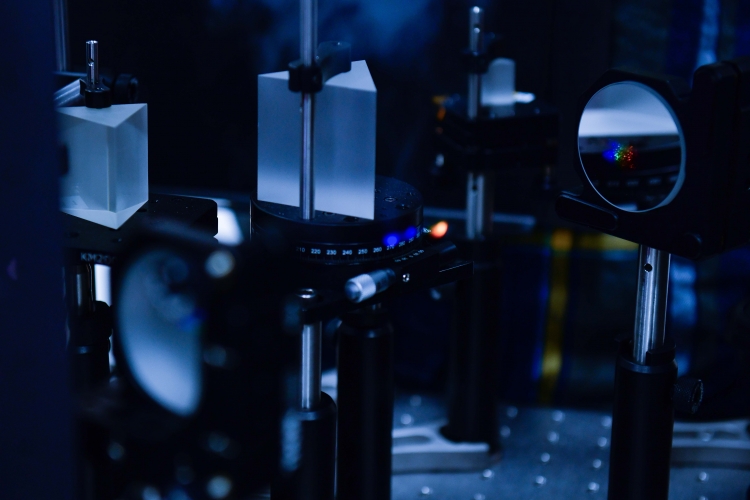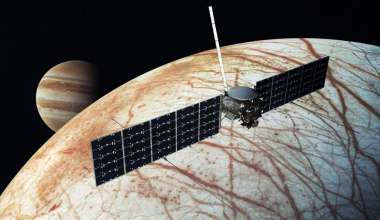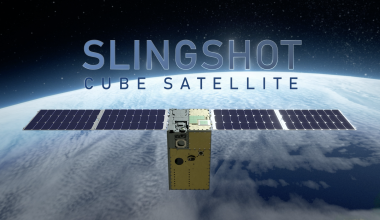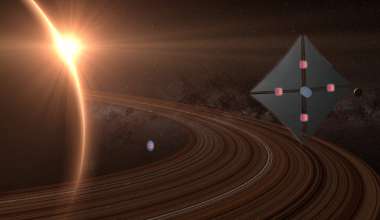Photovoltaic cells form an essential part of any spacecraft, converting energy from the sun to power onboard electrical systems. Mission designers need to understand the long-term performance of these cells, as that will dictate the available power and influence spacecraft size and weight. Testing these components is a challenging task—largely because of the difficulty of replicating the sun's outer-space spectrum on Earth.
"The sun is an approximately 6000 Kelvin fireball," explained Yao Lao of The Aerospace Corporation's Energy Technology Department. Reproducing the full breadth and intensity of the sun's solar spectrum is obviously beyond the capabilities of any testing laboratory. Nonetheless, Lao said, "it's critical in testing space photovoltaic cells to match the solar spectrum." Efforts to recreate the sun's spectrum typically involve the use of solar simulators, xenon-arc lamps, or an assembly of different colored LEDs, most of which are calibrated using standards obtained by sending photovoltaic cells high into the atmosphere on balloons.
None of these methods provides the desired fidelity for modeling the long-term effects of operation beyond Earth's atmosphere. However, Lao and her team are applying an innovative new technology—a supercontinuum laser—that could present a major step forward.
A Supercontinuum Laser Strategy
"Conventional lasers emit a very narrow spectrum of light or light of a single color," Lao explained. A supercontinuum laser, on the other hand, emits a broadband beam of white light, containing all the colors of the rainbow, from violet to near infrared. "Like a conventional laser," she said, "a supercontinuum laser is spatially coherent, meaning it stays narrow over a very long distance, and can be focused or expanded with traditional lenses."
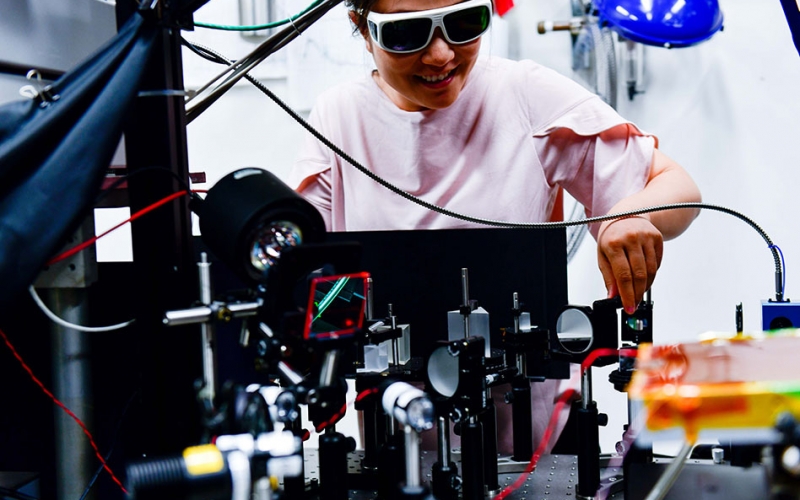
Lao is combining a supercontinuum laser with an instrument known as a spatial light modulator, which is essentially "a fancy light switch that can control how much light gets through or reflected," she said. By separating out the spectrum from the supercontinuum laser and running each component color through a spatial light modulator, Lao and her team can finely tune the output to match the spectrum of the sun in near-Earth space—and potentially anywhere else (e.g., outside Earth's atmosphere, Mars, outer planets, or underwater).
"So far, we have set up the supercontinuum solar simulator with all its optical components and have been able to tune the spectrum with one of the spatial light modulators," Lao said. "We have also been developing an auto-tuning routine and algorithm." The lab maintains an extensive inventory of photovoltaic cells provided by industry partners. The next step will be to use the apparatus to measure the efficiency of these cells and compare them with measurements obtained using traditional balloon calibrated standards, radiometrically tuned methods, and AeroCube measurements.
Solar-Cell Expertise
The work draws upon a long history of specialized expertise in solar-cell technology. "We have a world-class space photovoltaic solar simulator, which has helped industry partners in measuring and developing their advanced multi-junction photovoltaics," Lao said. "We also have years of experience in measuring all the advanced photovoltaic cell technologies using different tuning techniques." The combination of the white-light laser and the advanced tuning program "will break new ground on designing and optimizing new solar cells and arrays to operate under special light-spectrum conditions," she said. Part of the goal is to enable the creation of specially optimized arrays that can generate more power using fewer cells. "This can be critical for missions that are constrained in weight, volume, and surface area," she said.
Lao presented the preliminary results of her experiments at the 2018 World Conference on Photovoltaic Energy Conversion and has established a collaborative relationship with researchers at the National Institute of Standards and Technology (NIST). Researchers within industry and academia have expressed keen interest.
"Our customers look to us for accurate measurements and evaluation of the industrial base for advanced space photovoltaics in order to make decisions regarding solar array selection, sizing, and cost for the next generation of satellites for the resilient space enterprise," she said. "A highly tunable solar simulator can help provide accurate solar cell performance and life prediction, which will determine spacecraft capabilities."
